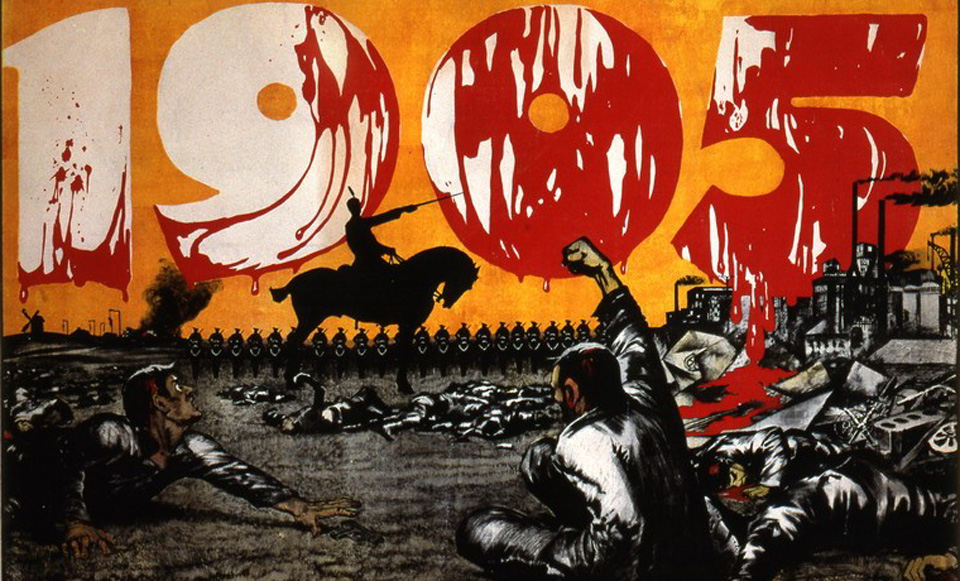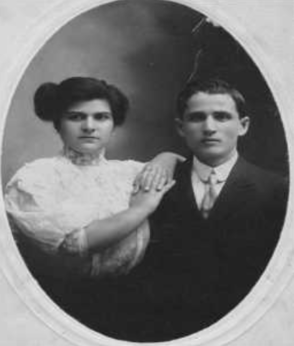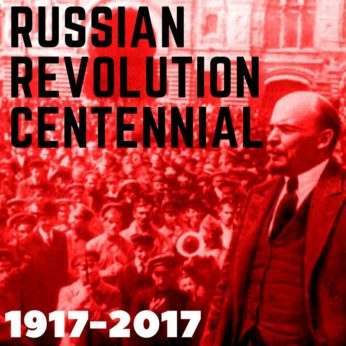
The Centennial of the Russian Revolution
November 7, 2017 marked the 100th anniversary of the Russian Revolution and the establishment of the world’s first socialist state. To commemorate the occasion, People’s World is presenting a series of articles that present wide-angled assessments of the revolution’s legacy, the Soviet Union and world communist movement which were born out of it, and the revolution’s relevance to radical politics today. Other articles in the series can be read here.
In 1905, there was a revolution in Russia. But the 1905 Russian Revolution was defeated and czarist rule prevailed for 12 more years. Still, the 1905 Revolution laid the foundation for the victorious one that followed in November 1917.
On a personal level, I’m keenly aware of the 1905 Russian Revolution. Its defeat put my father in a czarist jail with no hope of release. The anti-Czarist people’s underground planned his successful escape from jail, and he eventually made his way to the USA, where I was born.
The story of his escape, that I learned only after I was 40-years-old, sounds like a movie script. In a note baked in a cake by his then-fiancé, my father got his escape instructions. When guards took him out of jail to the town dentist, my father was to ask for an urgent toilet stop. During the night, the revolutionary underground had moved the dentist’s outhouse next to the fence. Boards in the fence and the outhouse had been loosened, allowing escape into the next yard and eventually to the United States. His fiancé joined him some months later, and I was born in the United States.
I think this is more than just a great family story. It is also a vivid example of the very low technology level of Czarist Russia. I also think the story makes clear that some of the tactics used in the Russian Revolutions of 1905 and 1917 would not work in the 21st century. But, I would argue, the basic strategies of class struggle and coalition-building are more relevant than ever.
To gain a better understanding of the history that led to the 1917 Russian Revolution, I found V.I. Lenin’s Lecture on the 1905 Revolution very helpful. He wrote the notes for the lecture just one year before the victorious October Revolution of 1917. Lenin ended the notes with something we often hear today: “We of the older generation may not live to see the decisive battles of this coming revolution.” But the very next year, the revolutionary crisis in Russia deepened, and the first successful working-class revolution began. Indeed, Lenin did live to not only see but also to lead some of the “decisive battles” of which he wrote.
Back to 1905 when the war with Japan strangled the Russian economy—there was widespread misery and suffering across the country. Some discontent was sidetracked into religious forms, leading to a respectful, even reverent petition procession to Czar Nicholas II, the “little father.” Keep in mind that the czar was also the head of the church. Many thought he would surely grant their petition if only he knew how much they were suffering. Phrased in the most respectful terms, the petition called for an end to the war with Japan, an 8-hour workday, and higher wages.
But the czar had skipped town, and they never got to give him their petition. Instead, 10,000 troops had been massed to stop the peaceful petitioners. The troops opened fire and thousands were killed, bystanders as well as marchers. A horrified reaction spread across the country, indeed across the world. To this day, the massacre is known as “Bloody Sunday.”
Within three weeks of Bloody Sunday, 414,000 of the 2 million factory workers in the country went out on strike. The strike stopped all rail traffic and paralyzed the government. A classic Eisenstein movie, Battleship Potemkin, shows how the uprising spread to the Black Sea fleet and other armed forces. About seven months after Bloody Sunday, Nicholas II agreed to a parliament (Duma), but one that was purely advisory and with extremely limited electorate. Although the Mensheviks (right-wing Social Democrats) accepted this meaningless offer, revolutionary workers, led by Bolsheviks, rejected it.
Meanwhile, freedom of press was won in practice if not in law. Censorship was simply ignored. University doors opened wide for public meetings where thousands of workers and artisans discussed political issues. For the first time in Russian history, revolutionary newspapers appeared freely in St. Petersburg and other towns. In the capital alone, three Social Democratic daily papers were published, with circulations ranging from 50,000 to 100,000.
This revolutionary storm forced the czar to issue a new electoral law, increasing the number of voters, and allowing the Duma to legislate. As the revolution deepened, it gave birth to new structures that would become the hallmark of the 1917 Revolution. These structures were never dictated “from above” but came out of the factories and from soldiers and sailors. As Lenin wrote:

“In the fire of battle, a peculiar mass organization was formed, the famous Soviets of Workers’ Deputies, comprising delegates from all factories [soviet is the Russian word for ‘council’]. In several cities, these Soviets of Workers’ Deputies began more and more to play the part of a provisional revolutionary government, the part of organs and leaders of the uprising. Attempts were made to organize Soviets of Soldiers’ and Sailors’ Deputies and to combine them with the Soviets of Workers’ Deputies. For a time, several cities in Russia became something in the nature of small local ‘republics.’ The government authorities were deposed and the Soviet of Workers’ Deputies actually functioned as the new government. Unfortunately, these periods were all too brief, the ‘victories’ were too weak, too isolated.”
In this period, the urban population was only 16 million out of a total population of 127 million; the rest were heavily exploited peasants. Revolutionary actions had also spread to the rural areas, but they were weakly organized and not connected. Lenin said that inadequate support by peasants was the main cause of “the temporary defeat of the Russian Revolution.” Calling the defeat “temporary” was proved correct by history. I believe that is still true today. The 1990s defeat of socialism will also prove temporary.
In an earlier article in this series, Bill Fletcher wrote perceptively on the development of the “national-colonial question” during the Revolution of 1917, as “a revolution within and against the Russian empire.” There were similar developments in 1905. Here, I would only like to add Lenin’s description of the czarist persecution of the Jews:
“Czarism vented its hatred particularly upon the Jews. On the one hand, the Jews furnished a particularly high percentage (compared with the total Jewish population) of leaders of the revolutionary movement. And now, too, it should be noted to the credit of the Jews, they furnish a relatively high percentage of internationalists, compared with other nations. On the other hand, czarism adroitly exploited the basest anti-Jewish prejudices of the most ignorant strata of the population in order to organize, if not to lead directly, pogroms. Over 4,000 were killed and more than 10,000 mutilated in 100 towns. These atrocious massacres of peaceful Jews, their wives, and children aroused disgust throughout the civilized world.”
The “temporary” defeat of the 1905 Revolution and the czarist persecution of Jews led to huge emigrations from Russia and Poland. Most came to the United States, where many went to work in clothing factories and organized unions, helping to build our current labor movement. In many ways, the Russian Revolution is also part of the history of the United States.
Bea Lumpkin’s autobiography, Joy in the Struggle: My Life and Love, is available from International Publishers.











